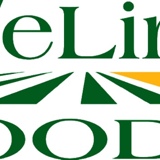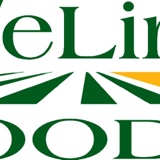Information
-
Conducted on
-
Personnel
Purpose
-
The purpose of this procedure is to provide specific railcar unloading instructions. Following these procedures consistently will ensure safe railcar unloading and prevent damage to railcars.
Scope
-
These procedures apply to all Bin Complex Operators tasked with unloading Pneumatic rail cars.
Standard Operating Procedures
-
1). Review form issued by QA listing the railcar number and designated hopper(s) to be unloaded.
-
Railcar number
-
Designated Hoppers
- Hopper B
- Hopper BC
- Hopper AC
- Hopper A
-
Are multiple hoppers designated to be unloaded?
-
Pick Hopper that is being unloaded.
-
2). Date/time railcar placed onto track 3, beginning unloading.
-
Name/signature of employee(s) assigned to unloading.
-
3). Remove both caps from unloading system/tube (front and back)
-
Add photos verifying removal of caps.
-
4). Open discharge valves on bottom of hopper.
-
5). Open both lids on designated hopper on top of railcar and remove bonnets.
-
6). Ensure plastic screens are in place on hatches to prevent contamination.
-
Add photos verifying open lids/screens in place.
-
7). Verify lines are set to desired bin indicator for unloading.
-
8). Start unload system (select rail unload icon for correct screen).
-
Date/Time beginning hopper unload.
-
9). Proceed to bin tops to ensure product is going to the selected bin.
-
10). Periodically check hopper to ensure product is being removed. Hopper unloads shouldn't take more than 2 hours.
-
11). Verify hopper is completely empty.
-
Blow out any residual product from hopper and unload tubes.
-
Add photo showing empty hopper(s).
-
12). Close discharge valves and replace caps (ensure caps are tight).
-
Add photo after caps are replaced.
-
13). Replace bonnets and close lids.
-
Add photos of closed lids.
-
Add date/time hopper unload was completed.
-
Add SOP for each hopper being unloaded.
Hoppers
-
Pick Hopper that is being unloaded.
-
2). Date/time railcar placed onto track 3, beginning unloading.
-
Name/signature of employee(s) assigned to unloading.
-
3). Remove both caps from unloading system/tube (front and back)
-
Add photos verifying removal of caps.
-
4). Open discharge valves on bottom of hopper.
-
5). Open both lids on designated hopper on top of railcar and remove bonnets.
-
6). Ensure plastic screens are in place on hatches to prevent contamination.
-
Add photos verifying open lids/screens in place.
-
7). Verify lines are set to desired bin indicator for unloading.
-
8). Start unload system (select rail unload icon for correct screen).
-
Date/Time beginning hopper unload.
-
9). Proceed to bin tops to ensure product is going to the selected bin.
-
10). Periodically check hopper to ensure product is being removed. Hopper unloads shouldn't take more than 2 hours.
-
11). Verify hopper is completely empty.
-
Blow out any residual product from hopper and unload tubes.
-
Add photo showing empty hopper(s).
-
12). Close discharge valves and replace caps (ensure caps are tight).
-
Add photo after caps are replaced.
-
13). Replace bonnets and close lids.
-
Add photos of closed lids.
-
Add date/time hopper unload was completed.
-
14). Once car is completed, take car to track 4 for reloading.
-
Enter date/time car unloading was completed.
-
Operator completing unload of railcar.










